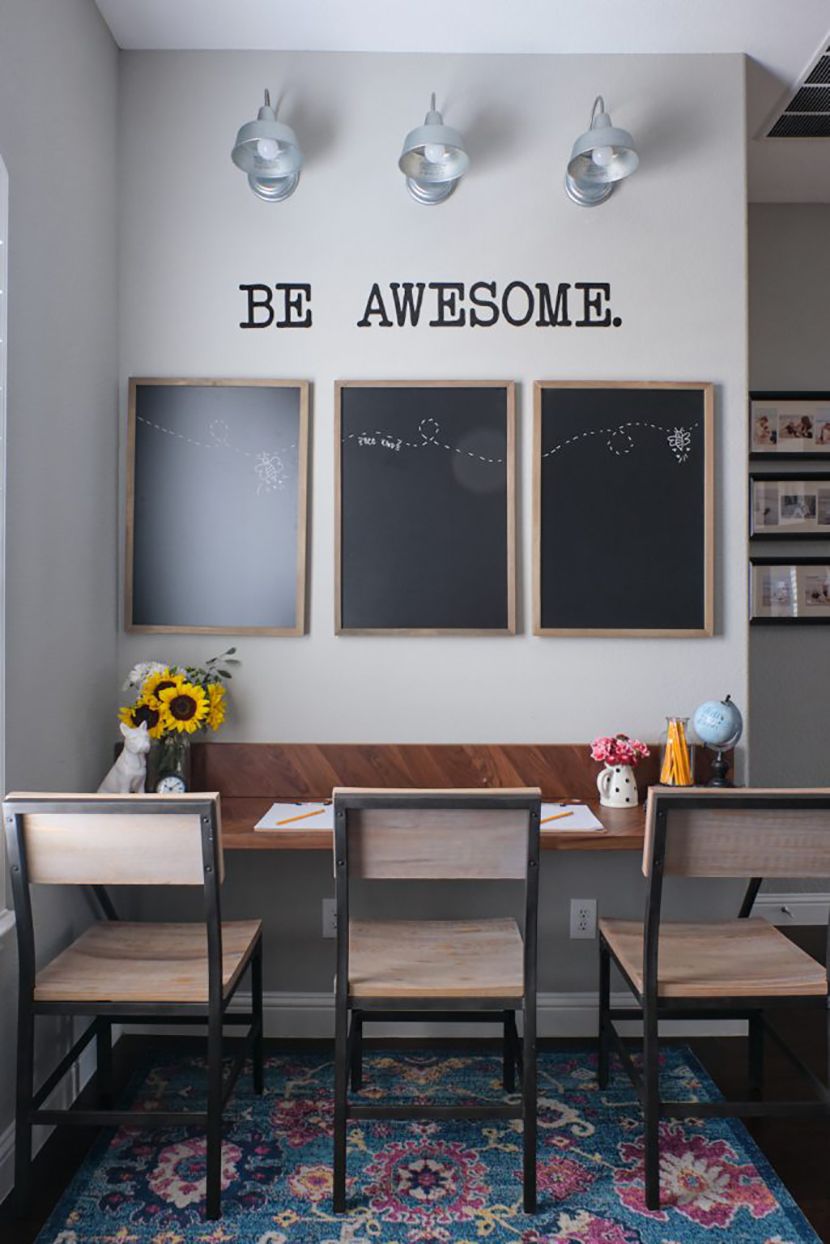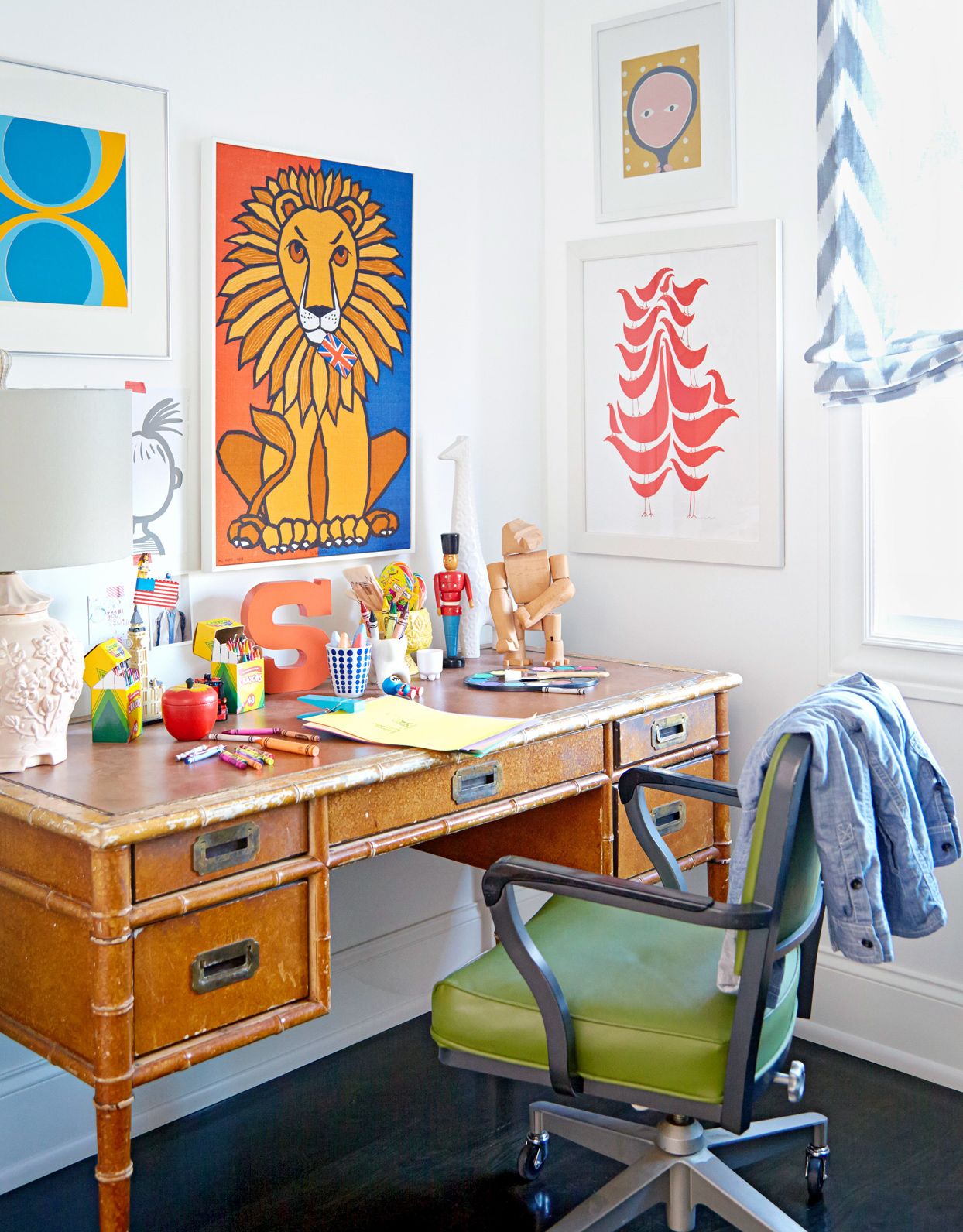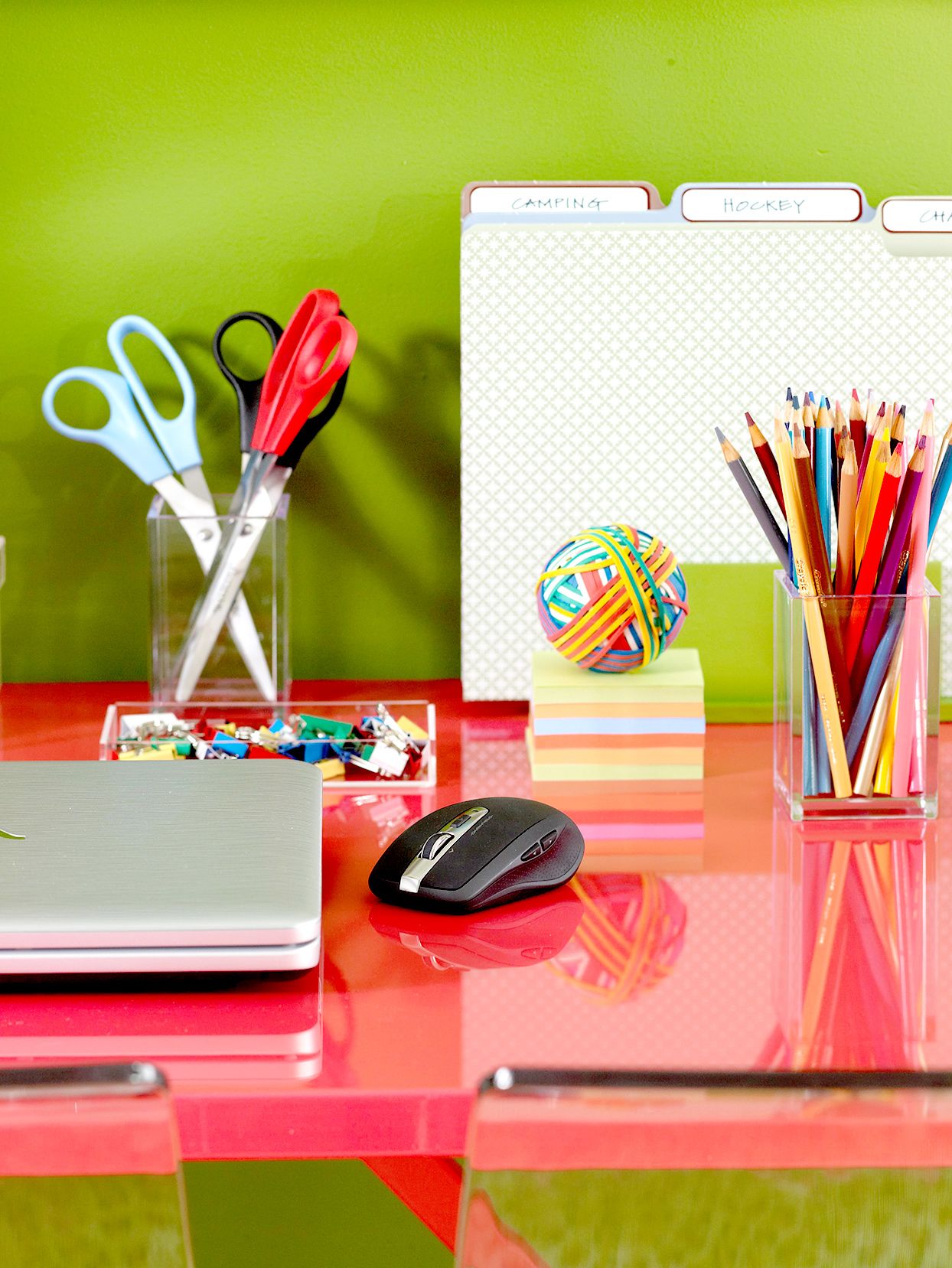Remote learning is a new reality many families are adjusting to this year. While some can devote an entire spare room to virtual schooling, others are having to get creative to carve out a homeschool space. But with a few clever design tips and desk organization ideas, you can transform a corner of your child's bedroom, your dining room table, or even a blank stretch of wall into a functional learning station.
How to Design a Homeschool Workstation
The first step to designing a workspace for kids is deciding on a location. An unused home office, guest room, or basement area are ideal if available. In homes where square footage is limited, look to empty corners or walls where you could place a low-profile desk. You can also designate a table that isn't typically used during the day as a workspace.
Avoid high-traffic areas to help minimize distractions, suggests Heather Goerzen of online interior design service Havenly's creative and design team. "It'll be harder to concentrate in an area where people are constantly moving about with home activities like loading dishes, changing laundry, or taking a TV break," she says. Bedrooms, dining rooms, and living areas that aren't frequently used during school hours can work well for remote learning.
If your only option is a busy room, consider setting up a divider to section off the space, Goerzen suggests. At the end up the day, fold up the screen and store it elsewhere. "Our brains are hardwired by habit, so the simple act of setting it up and taking it down can help signify it's time to shift into the study zone," she says.
The ideal homeschool area should also receive plenty of natural light. "If you can, create your homeschool zone in a room with lots of windows to enhance productivity, creativity, and even emotional positivity," Goerzen suggests. In dark areas, supplement with floor or desk lamps to illuminate the workspace and reduce eye strain.
Desk Ideas for Remote Learning
Virtual learning will likely require a variety of equipment and supplies, including a computer, textbooks, notebooks, and writing utensils. A desk typically works best for hosting these school essentials, but a few DIY alternatives can work just as well. A length of wood mounted to the wall, for example, can function as a floating desktop surface. You can also place wood or butcherblock across two filing cabinets to create a DIY desk with storage. A dining room table or stretch of kitchen countertop can also stand in for a kid's desk; just make sure you have a plan for storing school supplies and equipment when the day is over.
Decorating Ideas for Homeschool Spaces
Your child's workstation should be a space they enjoy spending time in. "Invite your student to be a part of the design process and include some decor elements to make it feel more personal to them," Goerzen says. Create an engaging atmosphere with fun artwork they picked out or framed photos of their friends. And unless your child's favorite color is gray, this isn't the space to stick to neutrals. "Bright, happy colors are often seen in classrooms for a reason," says Dallas-based interior designer Courtney Warren. Bring in lively shades through paint, wall art, and other accessories. A colorful, personalized homeschool space can help encourage creativity and productivity.
Homeschool Organization Tips
An organized, clutter-free desk can help your child focus on learning. Make a list of everything they'll need to complete their schoolwork, then implement organizing strategies to store each type of item. To help separate school hours and leisure time while learning remotely, plan to put everything away at the end of the day. Employ baskets for books and papers, utilize vertical space with shelves, and corral pencils and other small essentials with desktop organizers. If you're short on space, consider shallow lidded bins ($9, Crate & Barrel) that can be tucked under beds or sofas when not needed.



![A Tranquil Jungle House That Incorporates Japanese Ethos [Video]](https://asean2.ainewslabs.com/images/22/08/b-2ennetkmmnn_t.jpg)









